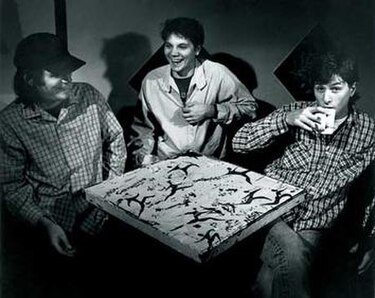
Gregg Allman doing what he did best.
Finally had a minute to sit down and digest Gregg’s passing…
One of my moments of musical awakening was sitting in front of my family’s hifi system, leafing through my dad’s records and having a moment of religious ecstasy as the Duane and Gregg each rang out the opening lines of “It’s Not My Cross to Bear.” This was pure American music and, unlike many other groups like The Band and the Rolling Stones who were also forging new ground in American archetypes, the Allman Brothers were all Americans and, moreover, never felt the need to leave the South. They blazed a trail for later, lesser groups like Skynard, Marshal Tucker, and in a way, themselves. Diminished post-Duane incarnations of the Allman Brothers began to imitate their own imitators and don regrettable confederate regalia and the like.
But those first few albums – The Allman Brothers Band, Idlewild South, At Fillmore East, and Eat a Peach – displayed a virtuosity unrivaled at the time, and a blending of American musical forms that we take for granted now, but were radical pretty radical in those days. Blues, country, rock and roll, and modal jazz, all boiled into a powerful lineup that could turn a tight blues number and then unspool an hours-long instrumental, with the occasional odd-ball time signature thrown in for good measure. And for those of you who don’t think those dudes had major jazz influences, listen to “Mountain Jam” or “Whippin’ Post” or “In Memory of Elizabeth Reed” and then tell me they weren’t listening to Coltrane.
Paralleling the sweltering guitar solos and hours-long jam session heroics, Gregg Allman quietly built an impressive body of carefully crafted songs, all while holding down an understated and somewhat reluctant front-man status. Most of the Allman Brothers best (imho) original pieces are Gregg’s and a few of his solo releases are quite beautiful as well.
It’s strange to say given that the band that bears his name, but I think in many ways Gregg was one of the most underrated musicians in that group. He was often overshadowed, first by his older brother Duane, then by Dicky Betts, then by guitar wunderkind Derrik Trucks. For all that, though, he brought a fresh vocal style to rock and roll, from which you can draw a straight line to Pearl Jam and the legions of rock groups they influenced. His organ provided the glue for one of the best live acts in rock history, and he wrote surprisingly sweet, melodic pieces that still sound fresh some 45 years later.
So, in another pathetic tribute to a lost brother in arms, here are my top 5 Gregg Allman songs:
Whippin Post
Please Call Home
Mellisa
Midnight Rider (my favorite version is from Laid Back)
Come and Go Blues




 Music
Music